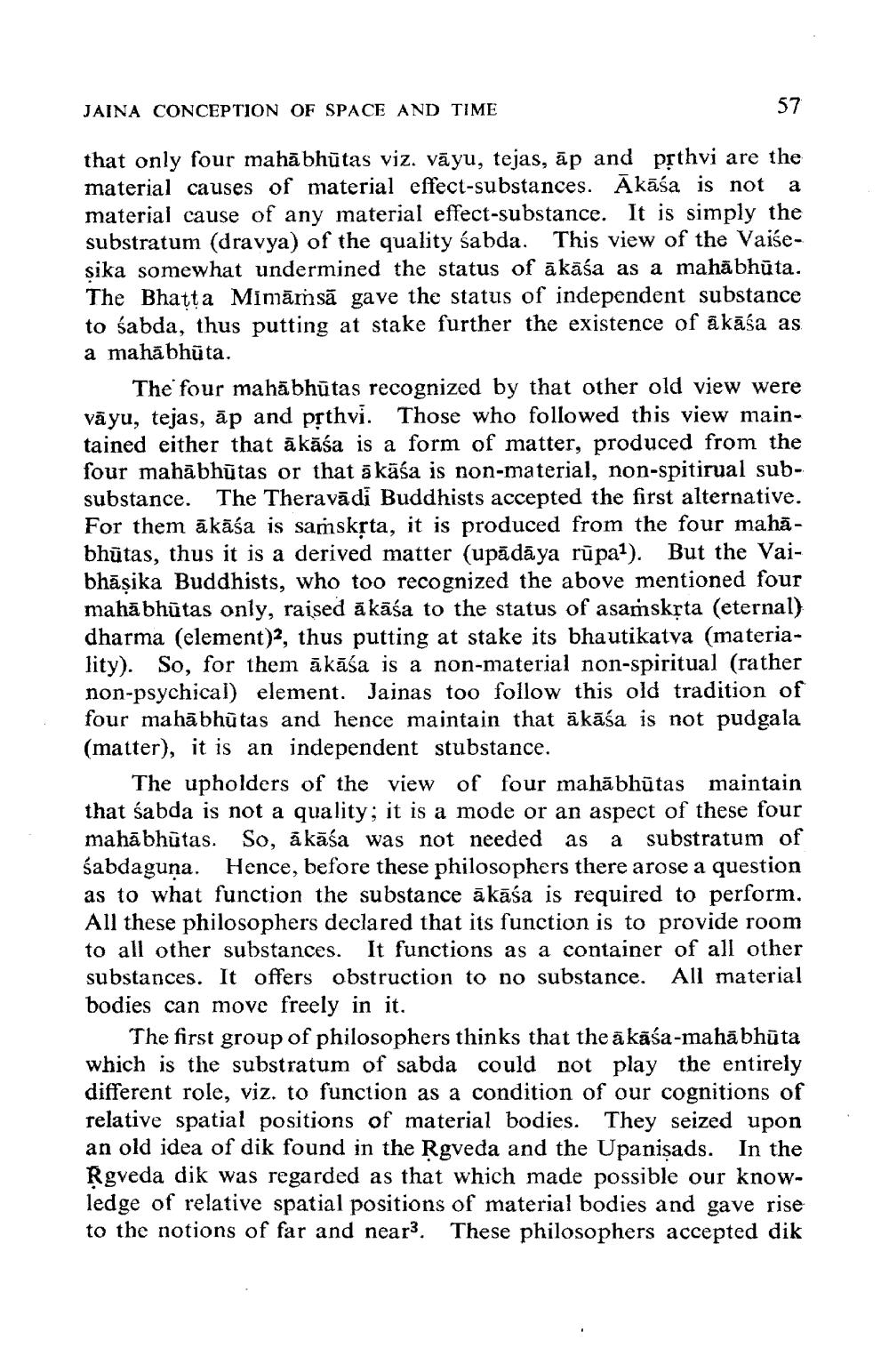________________
JAINA CONCEPTION OF SPACE AND TIME
57
that only four mahābhūtas viz. vāyu, tejas, āp and prthvi are the material causes of material effect-substances. Ākāśa is not a material cause of any material effect-substance. It is simply the substratum (dravya) of the quality sabda. This view of the Vaiseșika somewhat undermined the status of ākāśa as a mahābhūta. The Bhatta Mimārsā gave the status of independent substance to śabda, thus putting at stake further the existence of akāśa as a mahābhūta.
The four mahābhūtas recognized by that other old view were vāyu, tejas, āp and prthvi. Those who followed this view maintained either that ākāśa is a form of matter, produced from the four mahābhūtas or that ā kāśa is non-material, non-spitirual subsubstance. The Theravādi Buddhists accepted the first alternative. For them ākāśa is samskrta, it is produced from the four mahābhūtas, thus it is a derived matter (upādāya rūpa?). But the Vaibhāsika Buddhists, who too recognized the above mentioned four mahābhūtas only, raised ākāśa to the status of asamskřta (eternal) dharma (element)2, thus putting at stake its bhautikatva (materiality). So, for them ākāśa is a non-material non-spiritual (rather non-psychical) element. Jainas too follow this old tradition of four mahābhūtas and hence maintain that äkāśa is not pudgala (matter), it is an independent stubstance.
The upholders of the view of four mahābhūtas maintain that śabda is not a quality; it is a mode or an aspect of these four mahābhūtas. So, ākāśa was not needed as a substratum of śabdaguna. Hence, before these philosophers there arose a question as to what function the substance ākāśa is required to perform. All these philosophers declared that its function is to provide room to all other substances. It functions as a container of all other substances. It offers obstruction to no substance. All material bodies can move freely in it.
The first group of philosophers thinks that the ākāśa-mahābhūta which is the substratum of sabda could not play the entirely different role, viz. to function as a condition of our cognitions of relative spatial positions of material bodies. They seized upon an old idea of dik found in the Rgveda and the Upanişads. In the Rgveda dik was regarded as that which made possible our knowledge of relative spatial positions of material bodies and gave rise to the notions of far and near. These philosophers accepted dik




